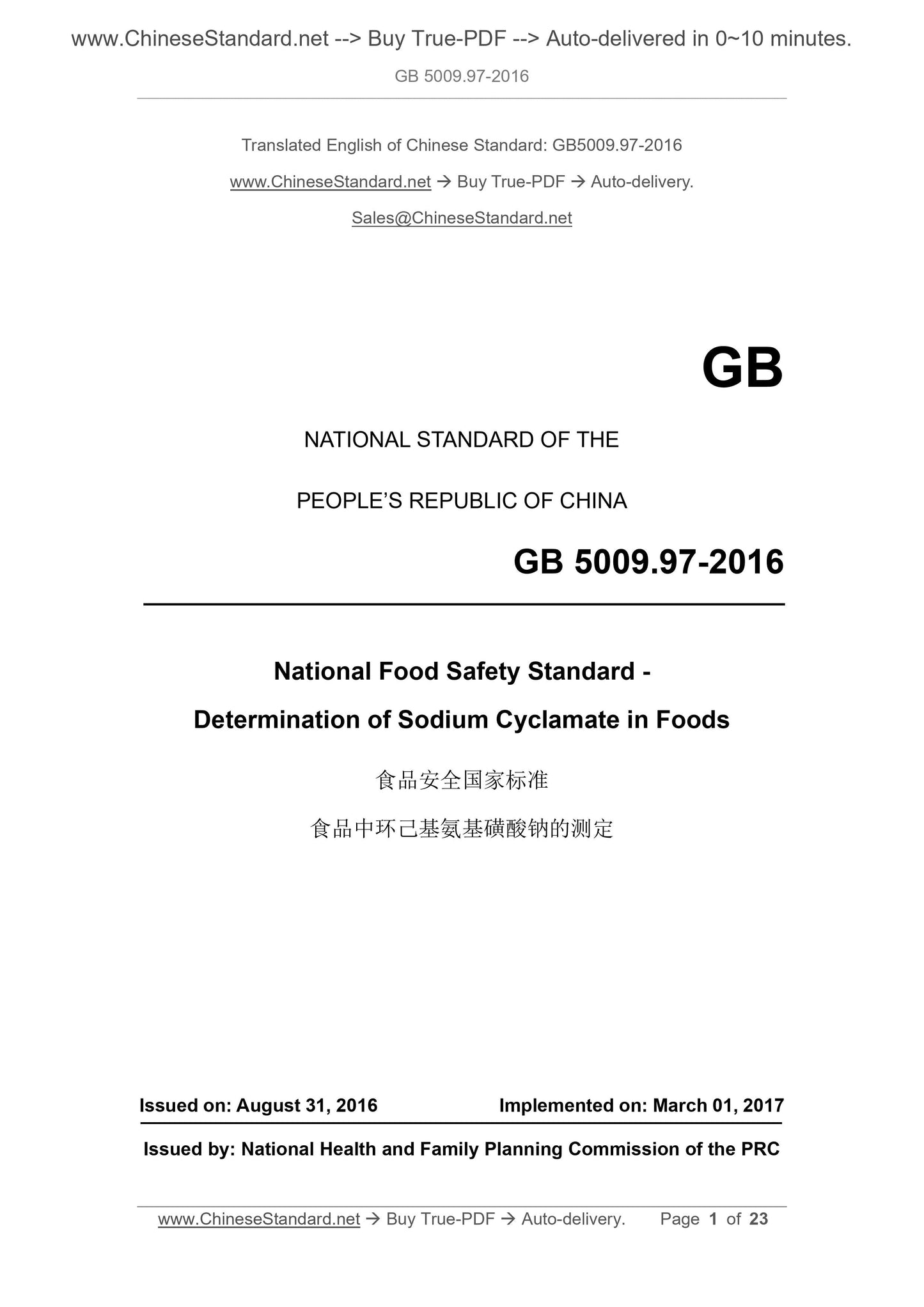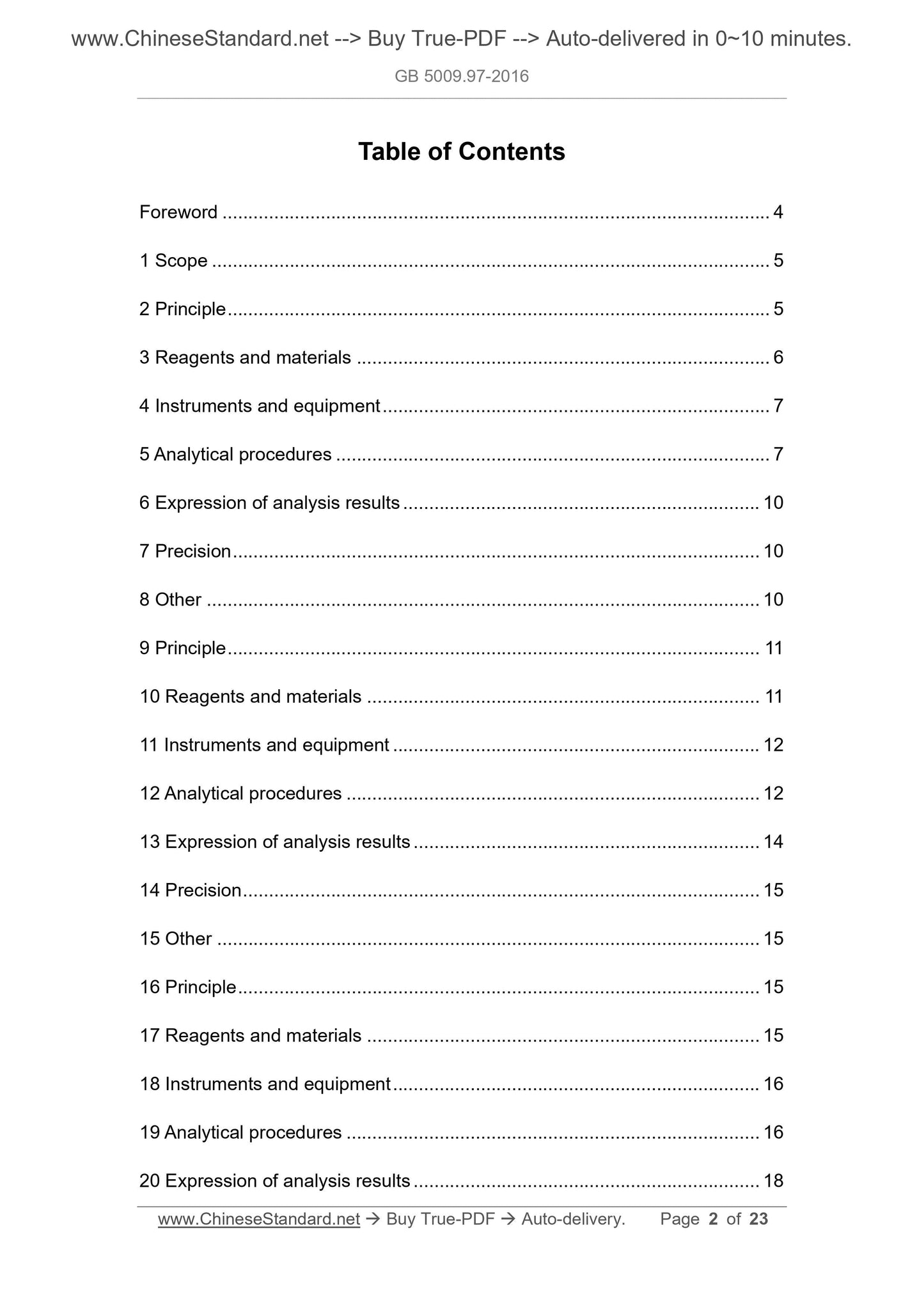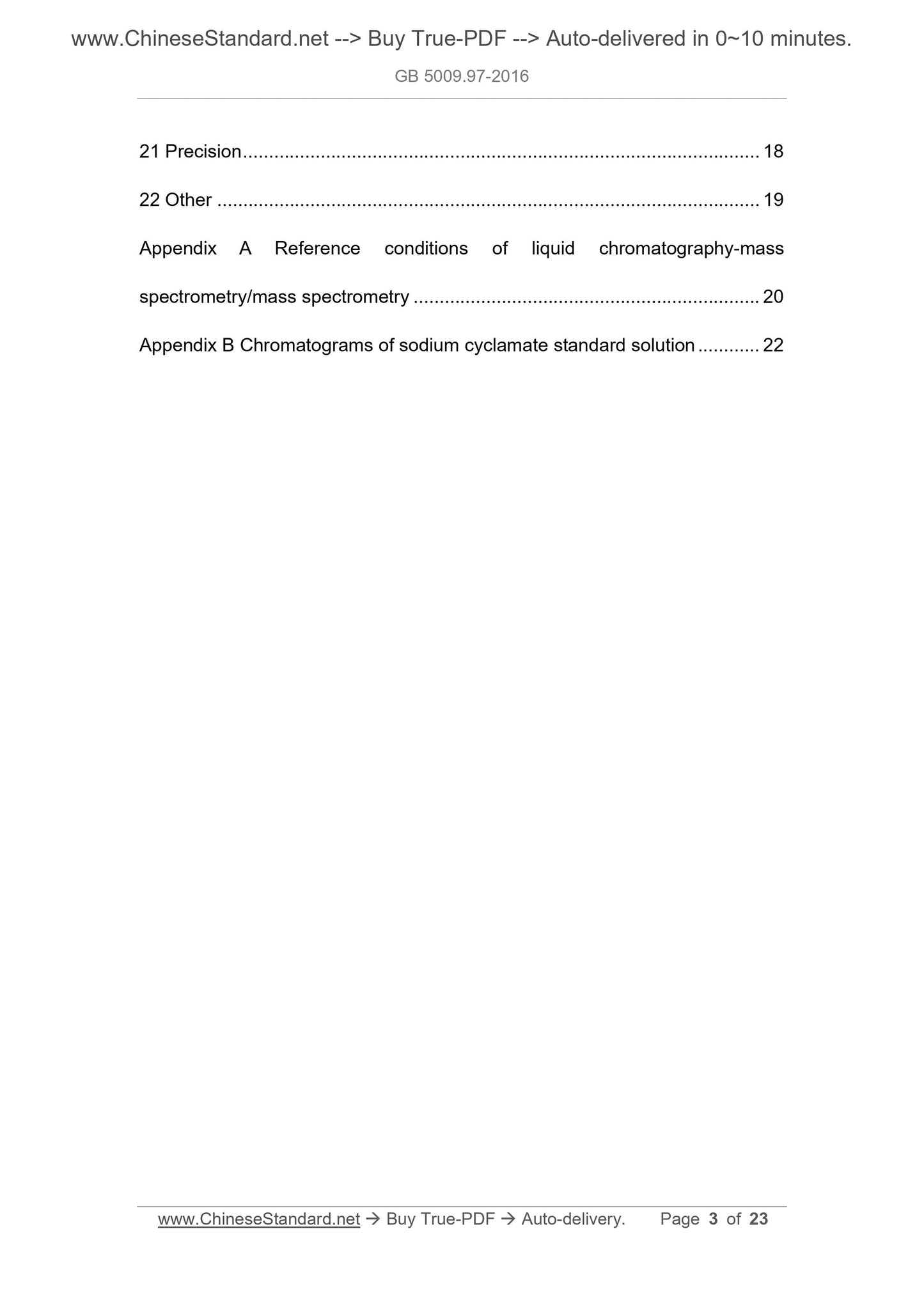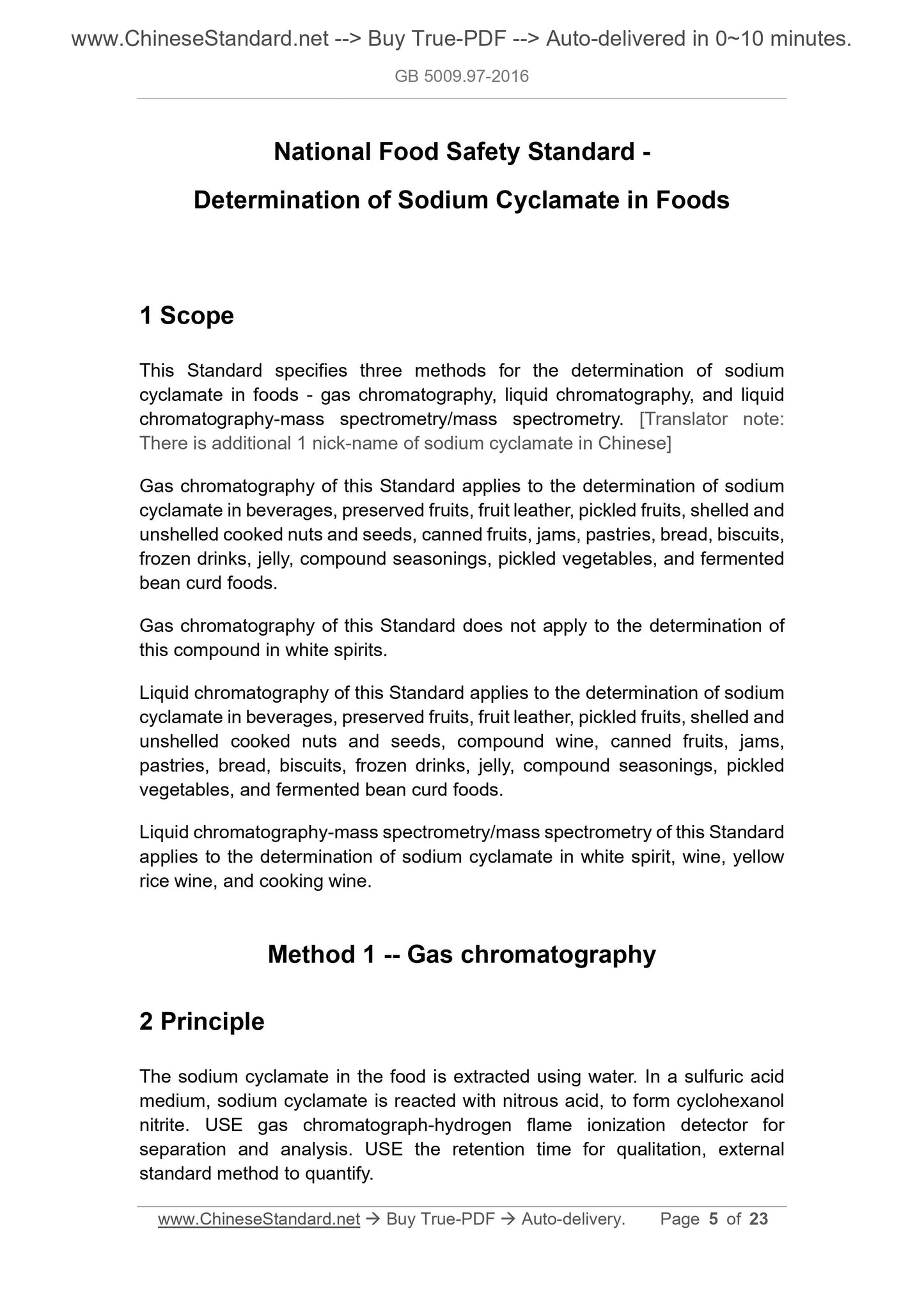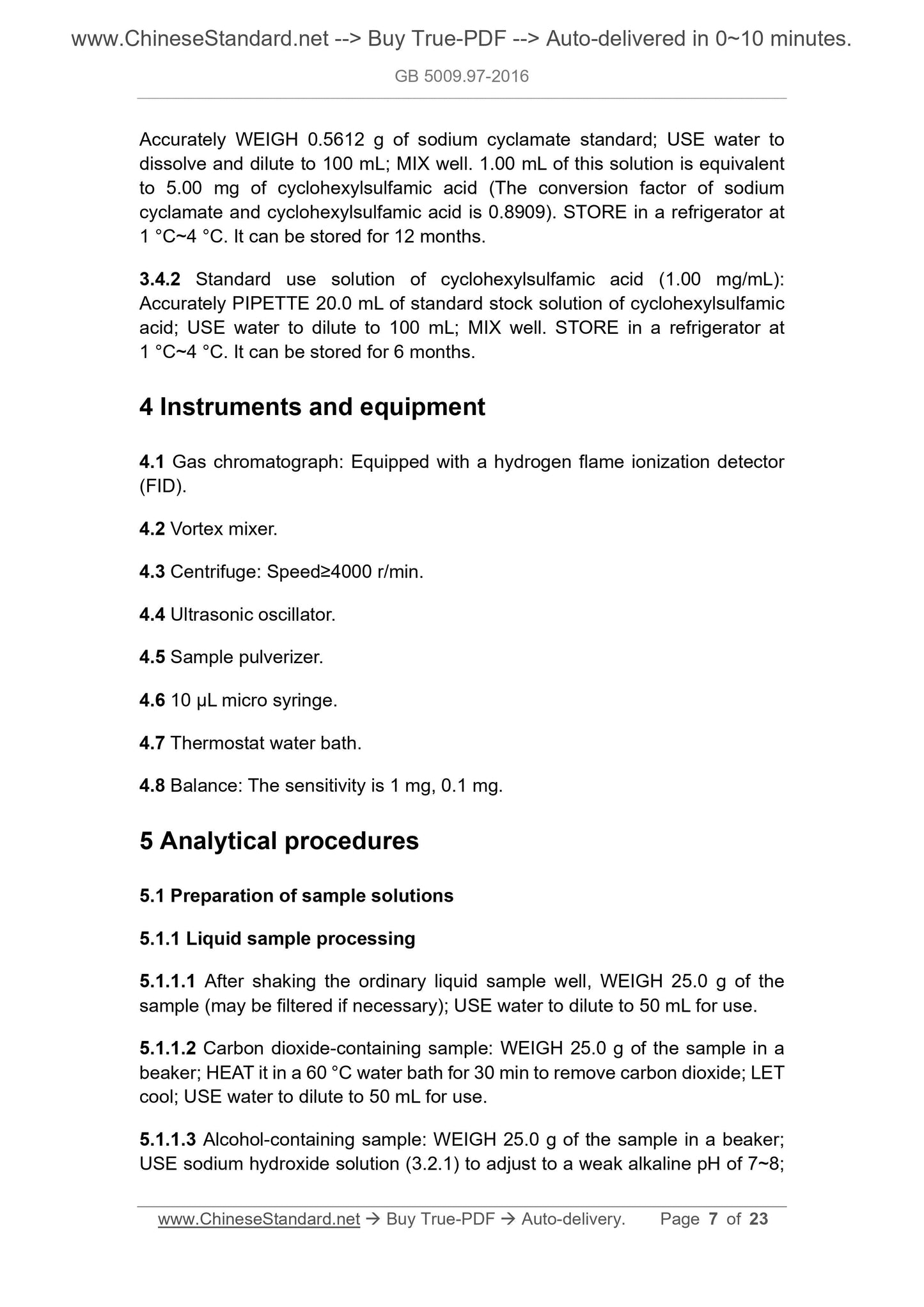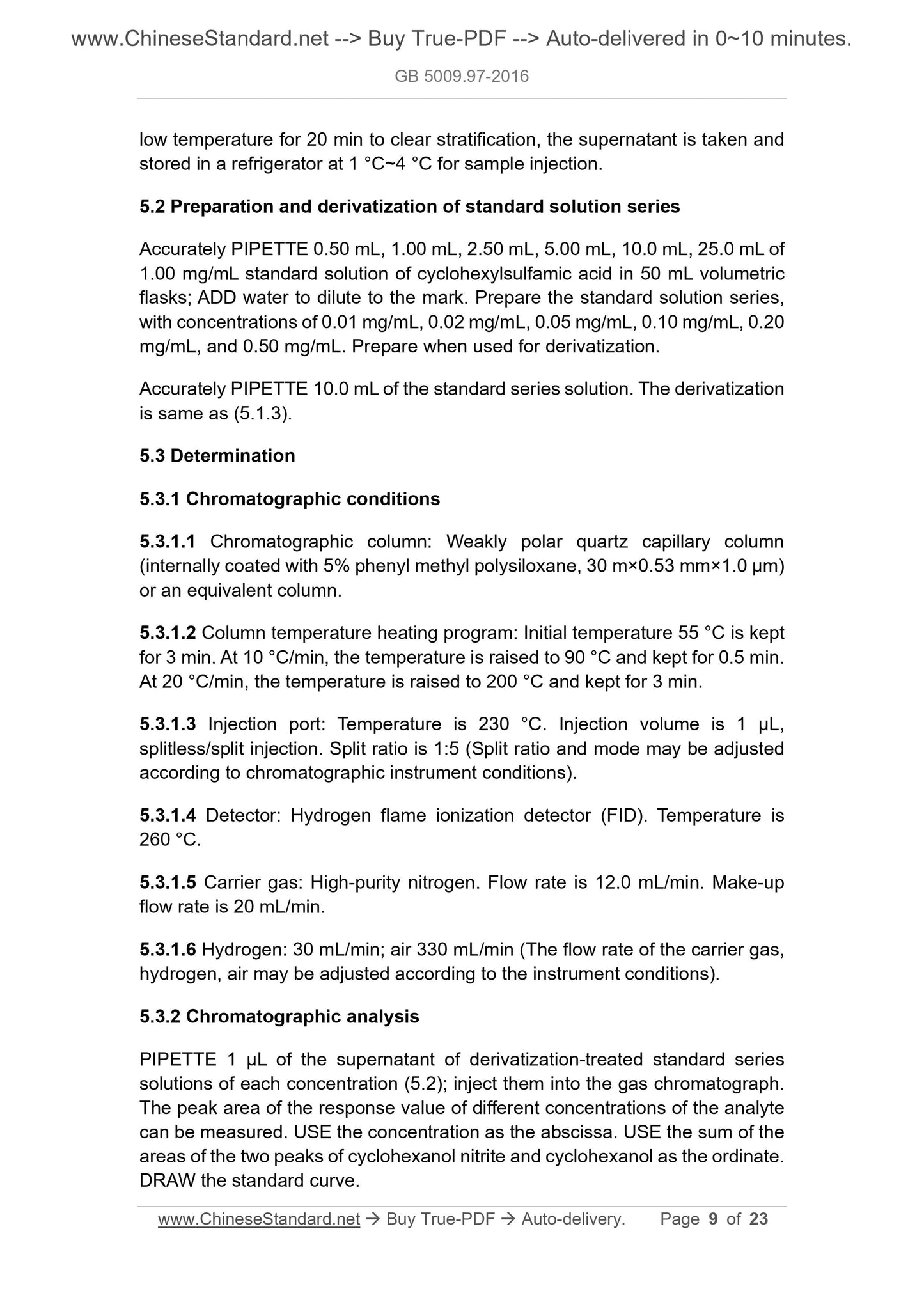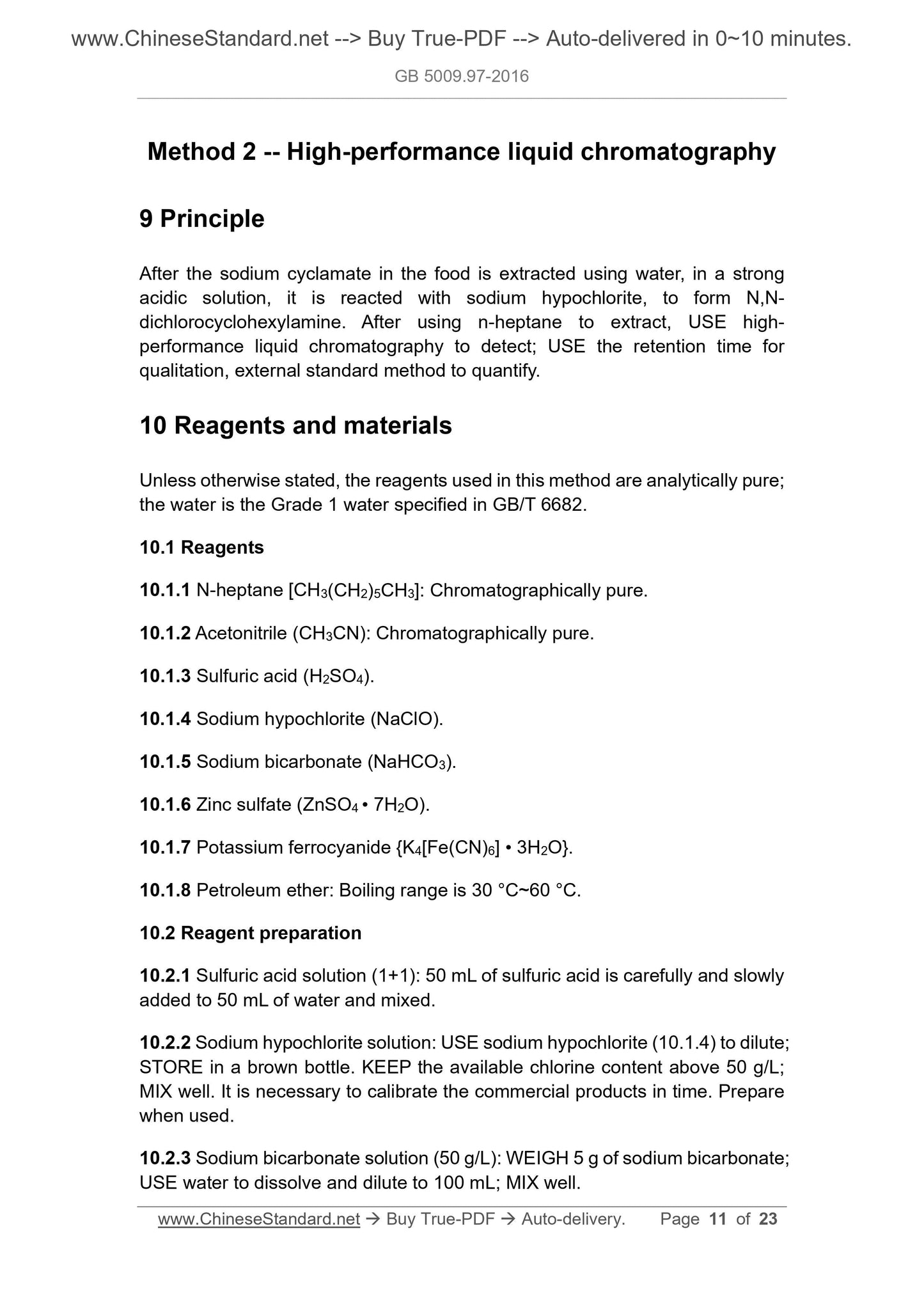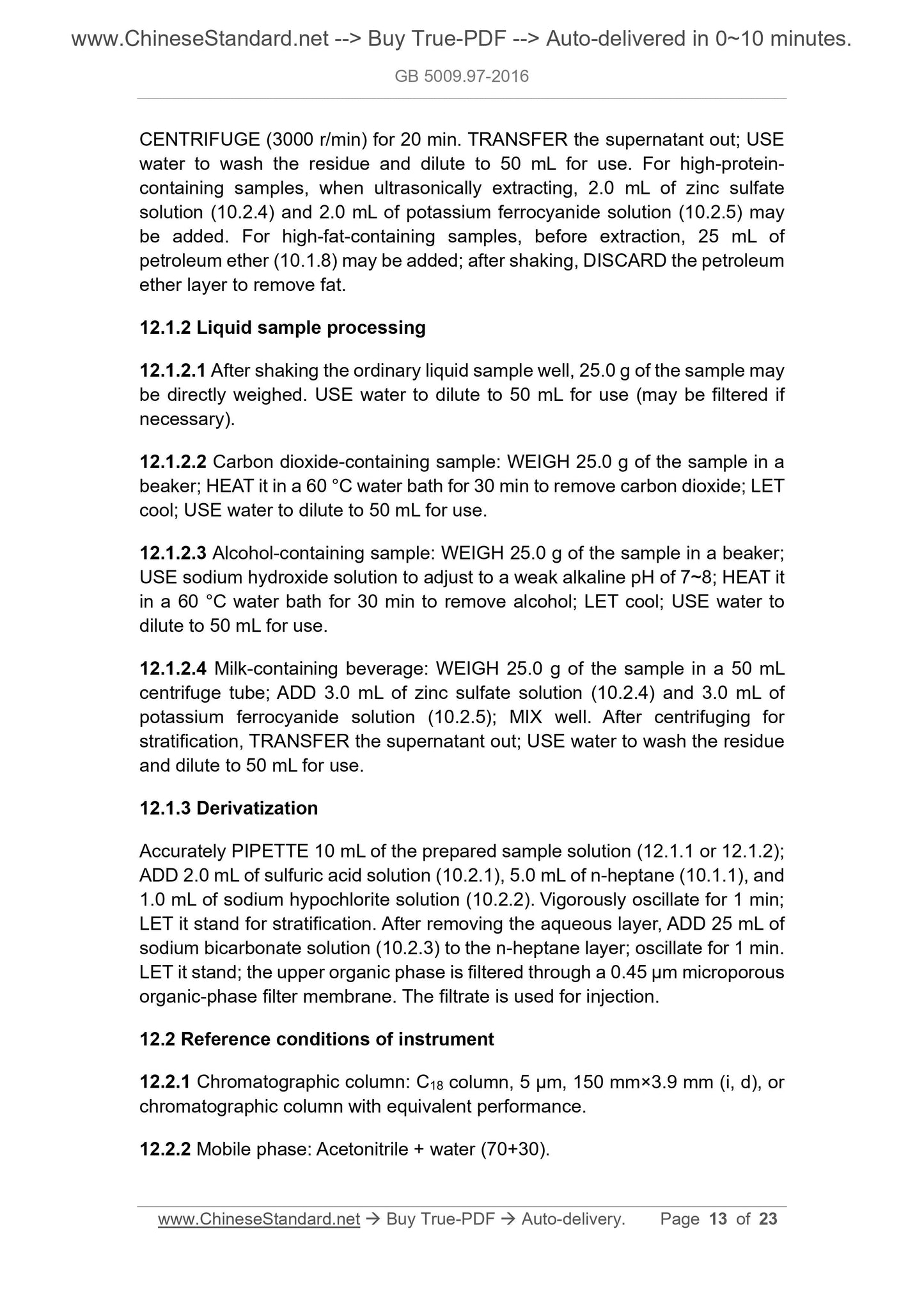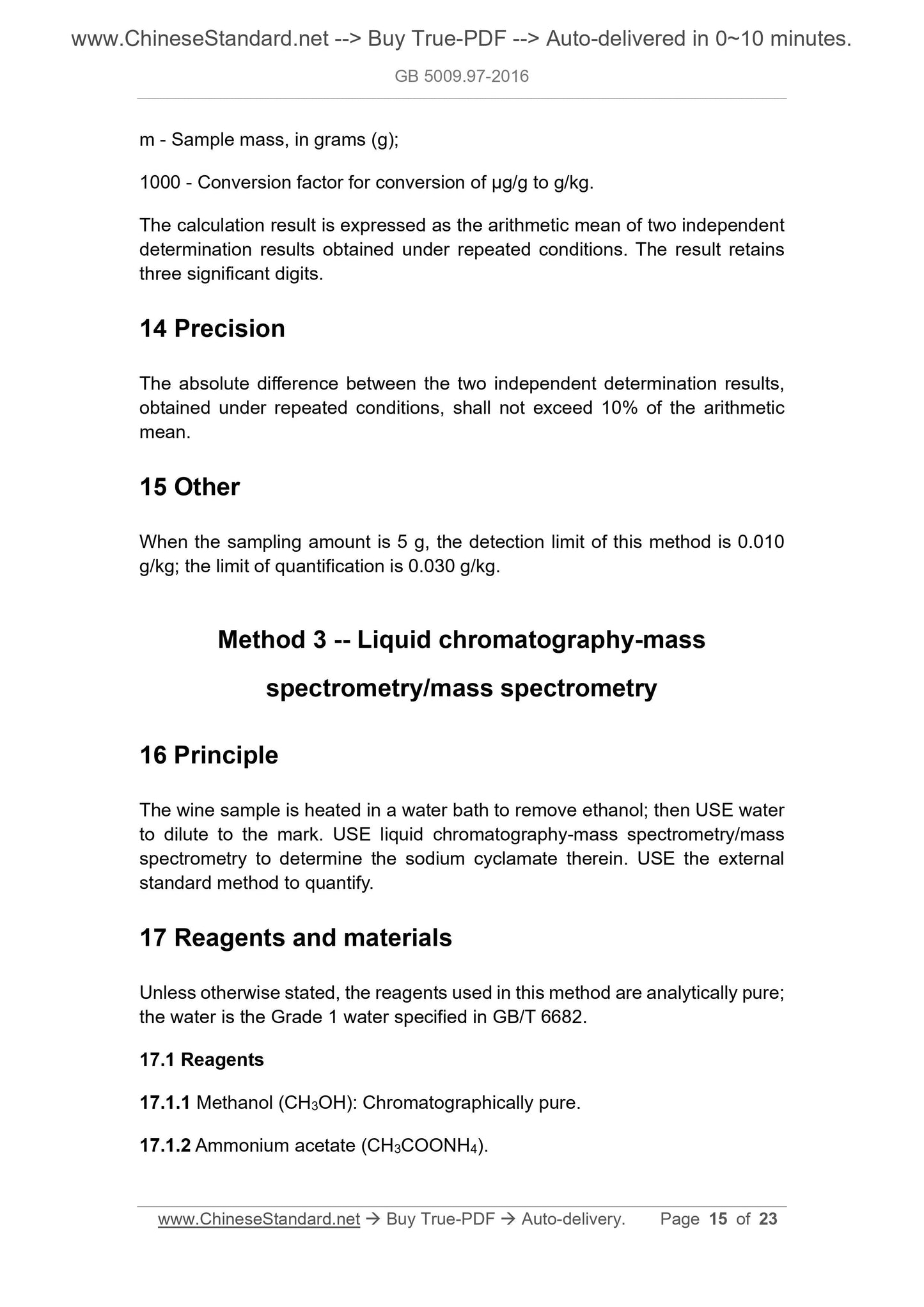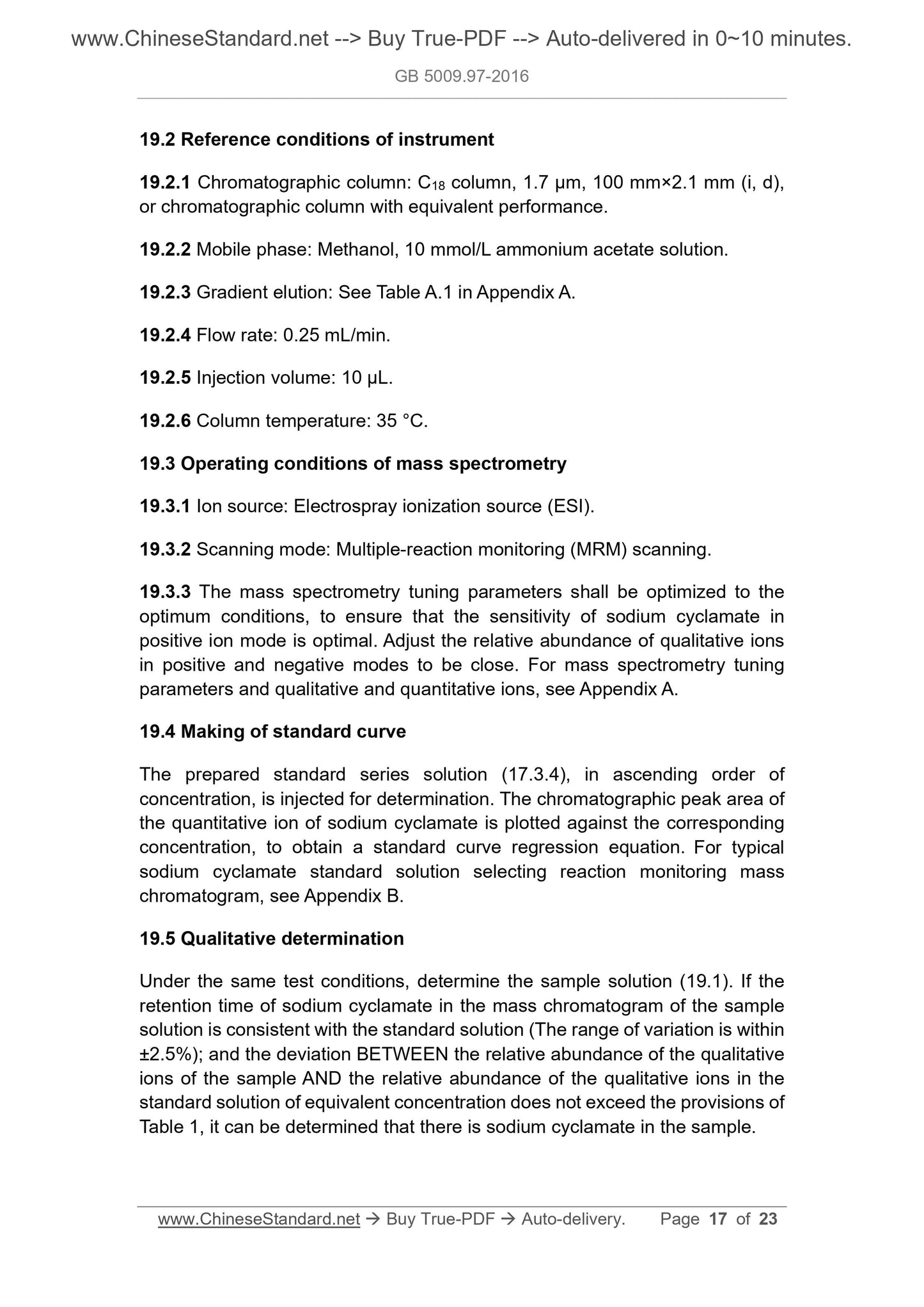1
/
of
10
PayPal, credit cards. Download editable-PDF & invoice in 1 second!
GB 5009.97-2016 English PDF
GB 5009.97-2016 English PDF
Regular price
$150.00
Regular price
Sale price
$150.00
Unit price
/
per
Shipping calculated at checkout.
Couldn't load pickup availability
GB 5009.97-2016: Determination of sodium cyclamate in foods
Delivery: 9 seconds. Download (and Email) true-PDF + Invoice.Get Quotation: Click GB 5009.97-2016 (Self-service in 1-minute)
Newer / historical versions: GB 5009.97-2016
Preview True-PDF
Scope
This Standard specifies three methods for the determination of sodiumcyclamate in foods - gas chromatography, liquid chromatography, and liquid
chromatography-mass spectrometry/mass spectrometry. [Translator note:
There is additional 1 nick-name of sodium cyclamate in Chinese]
Gas chromatography of this Standard applies to the determination of sodium
cyclamate in beverages, preserved fruits, fruit leather, pickled fruits, shelled and
unshelled cooked nuts and seeds, canned fruits, jams, pastries, bread, biscuits,
frozen drinks, jelly, compound seasonings, pickled vegetables, and fermented
bean curd foods.
Gas chromatography of this Standard does not apply to the determination of
this compound in white spirits.
Liquid chromatography of this Standard applies to the determination of sodium
cyclamate in beverages, preserved fruits, fruit leather, pickled fruits, shelled and
unshelled cooked nuts and seeds, compound wine, canned fruits, jams,
pastries, bread, biscuits, frozen drinks, jelly, compound seasonings, pickled
vegetables, and fermented bean curd foods.
Liquid chromatography-mass spectrometry/mass spectrometry of this Standard
applies to the determination of sodium cyclamate in white spirit, wine, yellow
rice wine, and cooking wine.
Method 1 -- Gas chromatography
Basic Data
| Standard ID | GB 5009.97-2016 (GB5009.97-2016) |
| Description (Translated English) | Determination of sodium cyclamate in foods |
| Sector / Industry | National Standard |
| Classification of Chinese Standard | C53 |
| Word Count Estimation | 15,124 |
| Date of Issue | 2016-08-31 |
| Date of Implementation | 2017-03-01 |
| Older Standard (superseded by this standard) | GB/T 5009.97-2003 |
| Regulation (derived from) | Announcement of the State Administration of Public Health and Family Planning 2016 No.11 |
| Issuing agency(ies) | National Health and Family Planning Commission of the People's Republic of China, State Food and Drug Administration |
Share
